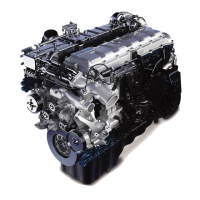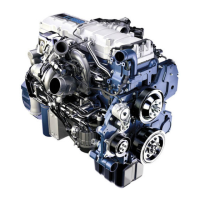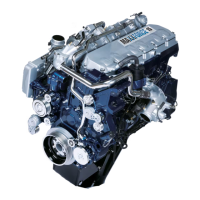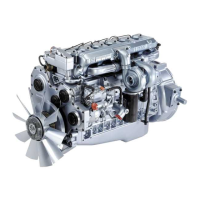POWER CYLINDERS 227
8. Remove the Plastigage® material. Repeat the
test for each connecting rod bearing.
Connecting Rod Side Clearance
Figure 320 Measuring connecting rod side
clearance
Place a feeler gauge between the connecting rod and
crankshaft journal. This is the connecting rod side
clearance.
If there is too little side clearance, the connecting
rod may be damaged or the bearing may be out
of position. If there is too much clearance, the
connecting rod or crankshaft may be damaged.
Checking Cylinder Sleeves
1. Inspect the inside surface of the cylinder sleeves
for scuffing, scoring and polishing. Inspect
the outside surface for cavitation. Replace the
cylinder sleeves with piston rings as required.
2. To check the cylinder sleeves for wear (taper), use
one of the following methods:
Telescoping Gauge Method
Figure 321 Checking cylinder sleeve inside
diameter with telescoping gauge
Figure 322 Measuring telescoping gauge
a. Use a telescoping gauge and an outside
micrometer to measure the inside
diameter of each cylinder sleeve at the
topofpistonringtravelandbelowthe
area of piston ring travel. Record the
readings.
b. Subtract the lower reading from the
higher reading. The result is the cylinder
sleeve taper.
If the result exceeds the specification,
replace the cylinder sleeve.
EGES-265-2
Read all safety instructions in the "Safety Information" section of this manual before doing any procedures.
Follow all warnings, cautions, and notes.
© 2009 Navistar, Inc.

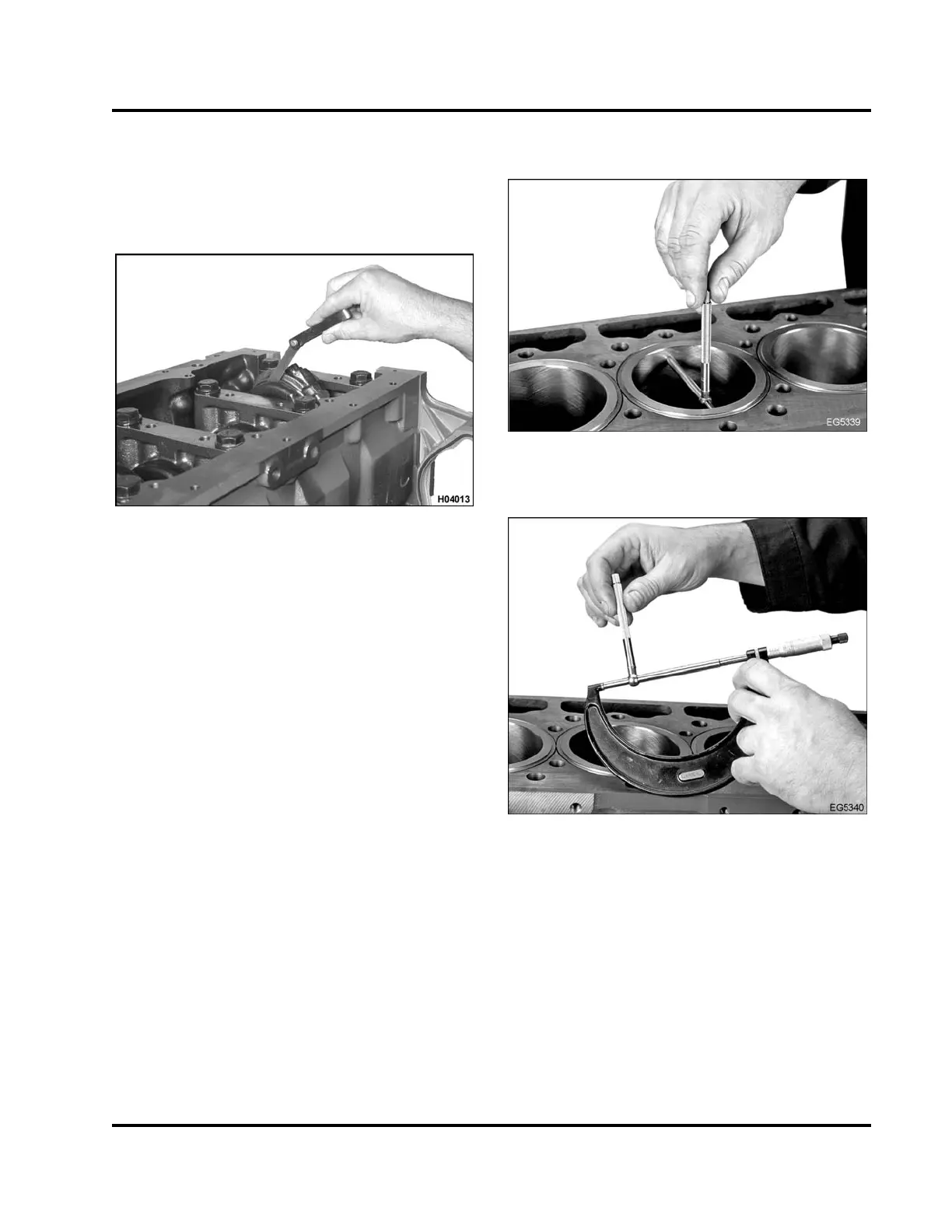